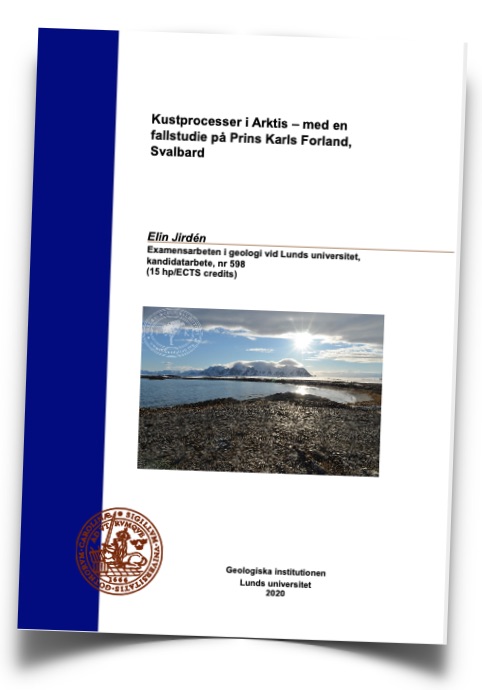ikfoundation.org
The IK Foundation
Promoting Natural & Cultural History
Since 1988




“
The mountains appear to be shaped like a prism
andstand in a long line, parallel to one another,
between which are snow-filled valleys.
”
SPITSBERGEN 25th of June 1758. ANTON ROLANDSSON MARTIN

INDEX
VOYAGE
VOYAGE DETAILS
VOYAGE I (2016)
VOYAGE II (2017)
VOYAGE III (2018)
VOYAGE IV (2019)
VOYAGE V (2020)
VOYAGE V | FIELDWORK INFORMATION | 2020
This year’s expedition (VOYAGE V) was carried out in May 2020, as the final part of this project at Spitsbergen. The FIELD STATION | NATURAE OBSERVATIO | MARTIN’S EYE was dismantled, all data secured and the site left without any trace of the massive collection of scientific observations amassed during the previous year. The long winter on Spitsbergen has been colder than in recent years, which has led to the build-up of strong ice formation along the coastal area and it has not since 2009 been so much ice in the Svalbard waters. This reality made it difficult/impossible to land safely on the rugged coast at Prince Charles Foreland | Prins Karls Forland as well as for transport of materials. Already in early April, our expedition ship the ice-strengthened MS Origo laid at anchor in the Adventfjorden to await better weather conditions, while a new international group of participants from Longyearbyen was trained and prepared to carry out the work, with as short notice as was practically possible. The solution to employ skilled local participants living in Longyearbyen – a small Arctic community which due to the pandemic has been severely affected by unemployment – together with "old folks" and former contributing participants made it possible to carry out this year’s fieldwork during the prevailing global pandemic. The fieldwork during this year has been an innovative challenge where we combined participants in the field and those who work at a distance, via among other methods, satellite communication. Voyage V was finally successfully performed in late May. The long-distance shipping of all material and data from the Field Station has already to some extent been returned to EU Europe and will continue to be shipped in several stages during the autumn, in an ongoing process to make the data available to all interested parties.
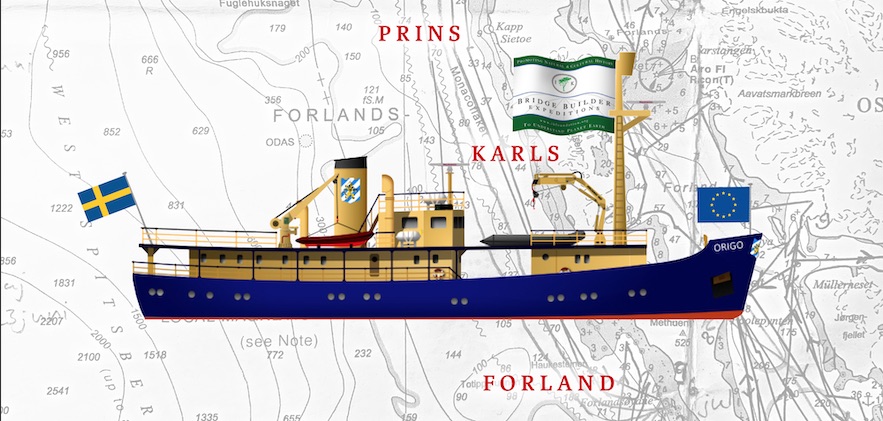
The project used MS Origo as a platform for the expedition participants, transport, fieldwork, logistic of all Field Station material and communication. Field documentation at Forlandsøyane | Prins Karls Forland (pictures, artwork and text) of the coastal area, particularly research area A-B, for reference studies of Anton Rolandsson Martin’s visit in the area in 1758. Coastal survey by field scientists and via the Field Station at a distance put into effect projects/ fieldwork in the following branches of knowledge: fauna, flora, astronomy, geology, meteorology and biosphere. MS Origo has also been equipped with an advanced camera, which around the clock documented the ship's route
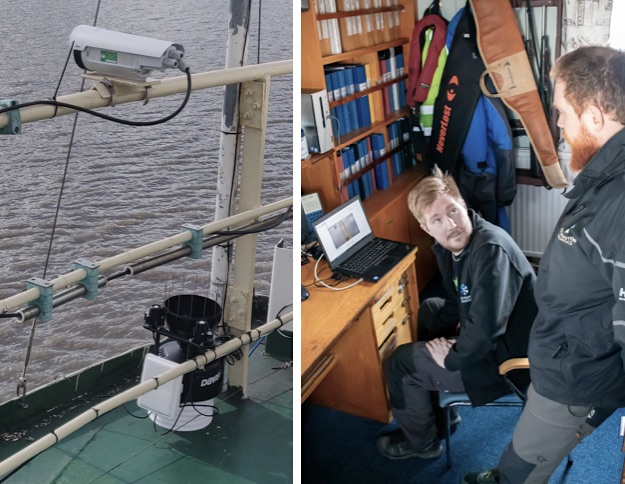
A seagoing simple Observation Station has been established on the expedition ship MS Origo. A weather station and a high-performance camera have been mounted to document selected maritime landscapes and routes. All data is controlled from and saved from the navigation room. PHOTO: Matts Ekman | Bridge Builder Expeditions Spitsbergen, VOYAGE V, 2020.
during the fieldwork, but will also during this autumn record the entire route in the southward direction that the whaling ship de Visser sailed in 1758. For the first time, large parts of Anton Rolandsson Martin’s sailing between Spitsbergen and Göteborg in Sweden will be documented – the coast, the waters, the sky, the wildlife and the changes in the biosphere.

- LONGYEARBYEN:
Assembly/preparation for the fieldwork and embarking on the expedition ship MS Origo. - FORLANDSØYANE | PRINS KARLS FORLAND (West):
Field documentation (pictures, artwork and text) of the coastal area, research area A-B, for reference studies of Anton Rolandsson Martin’s visit to the area in 1758. Dismantling of the temporary autonomous micro FIELD STATION | NATURAE OBSERVATIO | MARTIN’S EYE. Coastal survey by field scientists on site and via the Field Station at a distance, will put into effect projects/ fieldwork in the following branches of knowledge: Fauna, flora, astronomy, geology, meteorology and biosphere. - FORLANDSUNDET | PRINS KARLS FORLAND (East):
Night/anchorage and protection for poor weather conditions. - KAPP LINNÉ | ISFJORDS RADIO:
Alternative night/anchorage and protection for poor weather conditions. Place for GSM 4G communication. - LONGYEARBYEN:
Return to base. Primary control, care for and inspection of all field material. Repackaging and lashing aboard MS Origo before traveling south towards Göteborg harbour in Sweden. - GÖTEBORG:
Second control, care for and inspection of all field material. Transhipment for further distribution to The IK Foundation's various warehouses, and units in EU Europe. Processing of collected data and equipment begins.
INITIAL FIELD REPORTS | VOYAGE V 2020
THE AUTONOMOUS FIELD STATION ON SPITSBERGEN: FINAL CHAPTER
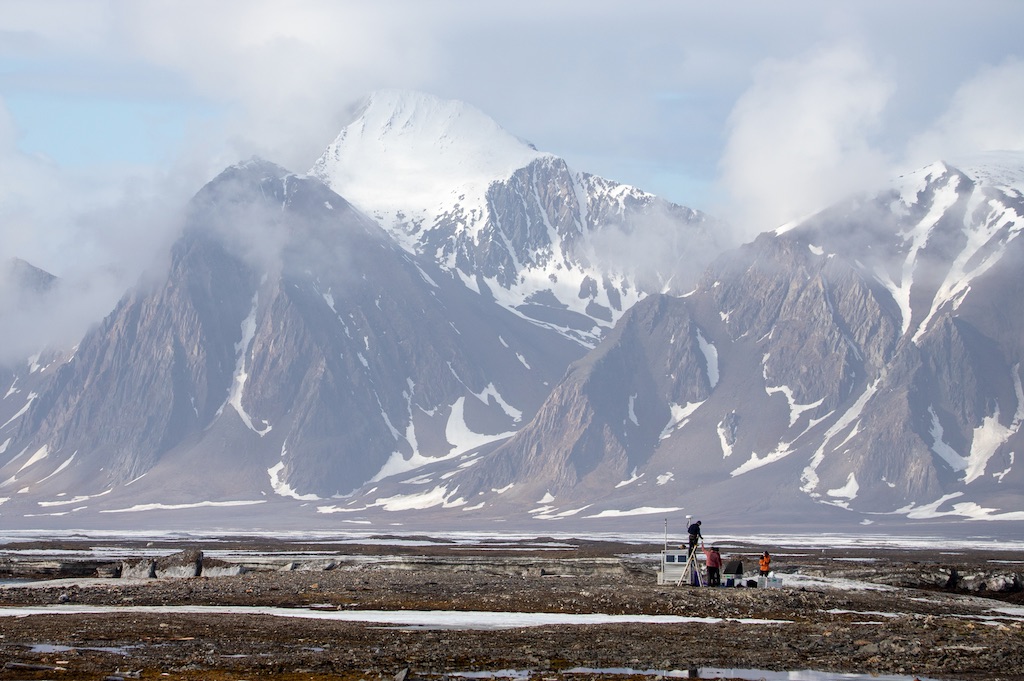
Field Station | Naturae Observatio | Martin's Eye location in the magnificent landscape. PHOTO: Matts Ekman | Bridge Builder Expeditions Spitsbergen, VOYAGE V, 2020.
SCIENTIFIC FIELD MISSION COMPLETED
Since our previous visit in September 2019 at the temporary autonomous FIELD STATION | NATURAE OBSERVATIO | MARTIN'S EYE on the west coast of Prins Karls Forland, the station has been equipped with the following instruments, used for observations: Weather station, SongMeter for documentation of sound, one camera system in a northerly direction and four trap cameras. For all operations and communications, fuel cells and satellite communications have been utilised.
During the fieldwork in September 2019 the weather conditions were poor. Due to this unfortunate situation it was not possible – according to the project plan – to dismantle the station, and so it had to be decided to let the station continue to be active for a longer period. Temporary repairs of various technical components, which had been damaged by curious polar bears during the summer also made the station fully functional again.
Despite these unfavourable odds, the Field Station has succeeded to delivered an extensive amount of unique data of the local biosphere. In total consisting of 317 Gigabyte raw data divided on 2,074,053 observations, in the following sections:
- Pictures | 9,938 files.
- Sound | 27,302 files.
- Weather Log | of 2,036,813 observations (each observation consists of up to 60 individual weather measurements).
All data has been made available in two stages. (A) primary observations via satellite and (B) during two visits in September 2019 and May 2020, when the data memory of the Field Station was emptied. These observations are available and synchronised in chronological order on the dedicated site OBSERVATION DATA for FIELD STATION | NATURAE OBSERVATIO | MARTIN'S EYE.
THE FINAL DISMANTLING AND FIELDWORK
To succeed with the dismantling of the Field Station, it was necessary to have: (A) Local weather conditions, which made it possible for transport in Zodiacs of participants and material between the expedition ship and land. (B) That these weather conditions were stable. (C) To make sure that these circumstances occurred in accordance with logistic, participants, the expeditions ship as well as local rules and regulations in time! That is to say, the fieldwork had many stepping stones to take into account, in particular during this year with local and international rules almost changing from one day to the next, due to the global COVID‑19 pandemic.
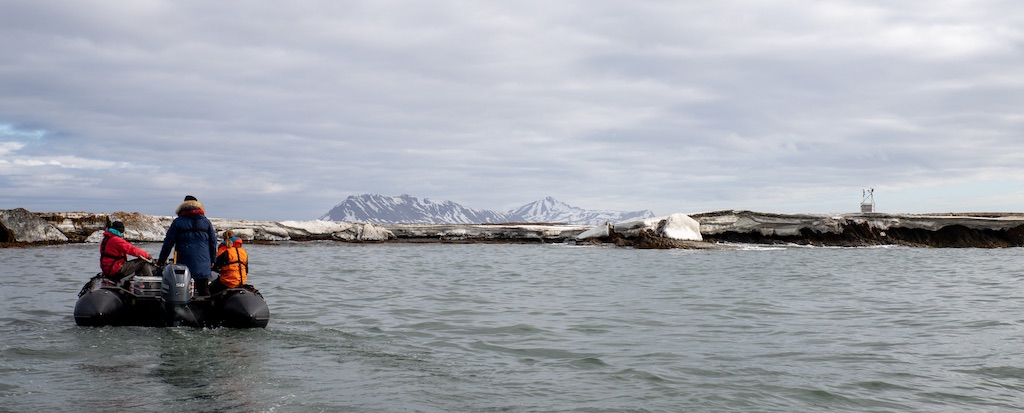
In search for a good and safe landing site close to the Field Station. PHOTO: Matts Ekman | Bridge Builder Expeditions Spitsbergen, VOYAGE V, 2020.
As described by way of introduction, this work started during early spring of 2020, while we initially searched for local participants and to prepare them for the fieldwork, simultaneously as we made sure that the expedition ship MS Origo had the possibility to remain in the port of Longyearbyen. A port, which in other respects was almost empty, since the pandemic had stopped more or less all commerce and shipping which used to sail towards Svalbard during this time of the year!
After that the groups of new and remotely active participants had been allied, the local field group was put at standby during May 2020, to be able to mobilise with as short notice as possible to carry out the fieldwork during suitable circumstances according to the points A to C above.
The local field group was to be lead by the Deputy expedition leader Mikael Johansson and Captain Emil Heijel, when such an opportunity arose during the end of May. In total, 23 participants became part of the fieldwork whereof 14 remotely. On 28 May the weather was quite good, compared to in the previous weeks. The temperature measuring +4C, a windspeed of 8-10 m/s and rolling small waves, which made it possible for the field group to make a landing with Zodiacs and start dismantling the Field Station. Simultaneously as the project photographer Matts Ekman documented the exact location of the station, its status and the surrounding landscape on Prince Charles Foreland | Prins Karls Forland. These photographs will be part of a foundation for the ongoing documentation of how the station continued to work in the harsh climate. But also to assist the Field artist Måns Bergendal, who has taken part in the five previous fieldwork expeditions, but this time be able to remotely use a selection of images from the photographer’s documentation.
Time-lapse on the dismantling of the Field Station. PHOTO | Time-lapse: Mikael Johansson | Bridge Builder Expeditions Spitsbergen, VOYAGE V, 2020.
The idea with the autonomous FIELD STATION | NATURAE OBSERVATIO is that it is designed to be easily mounted and dismantled in the field while being able to make unsupervised observations for long periods so that it does not disturb local wildlife. MARTIN'S EYE has over a 12-month period only been supervised once during, but in large produced its own energy and made observations for most of its active time in the field.
Another requirement of this type of Field Station is that it should not leave any visible traces behind, when the station is dismantled and removed, the square meter on which the station has stood is returned to Nature! The fact that this works in practice shows the dismantling, which was carried out efficiently and standardised by skilled participants – from technical professionals, individuals in charge of the important packing in special AluBoxes to protect the equipment as well as the transport of the equipment between land and the expedition ship to the responsible for safety and post-inspection that the site is left without damage or forgotten material!
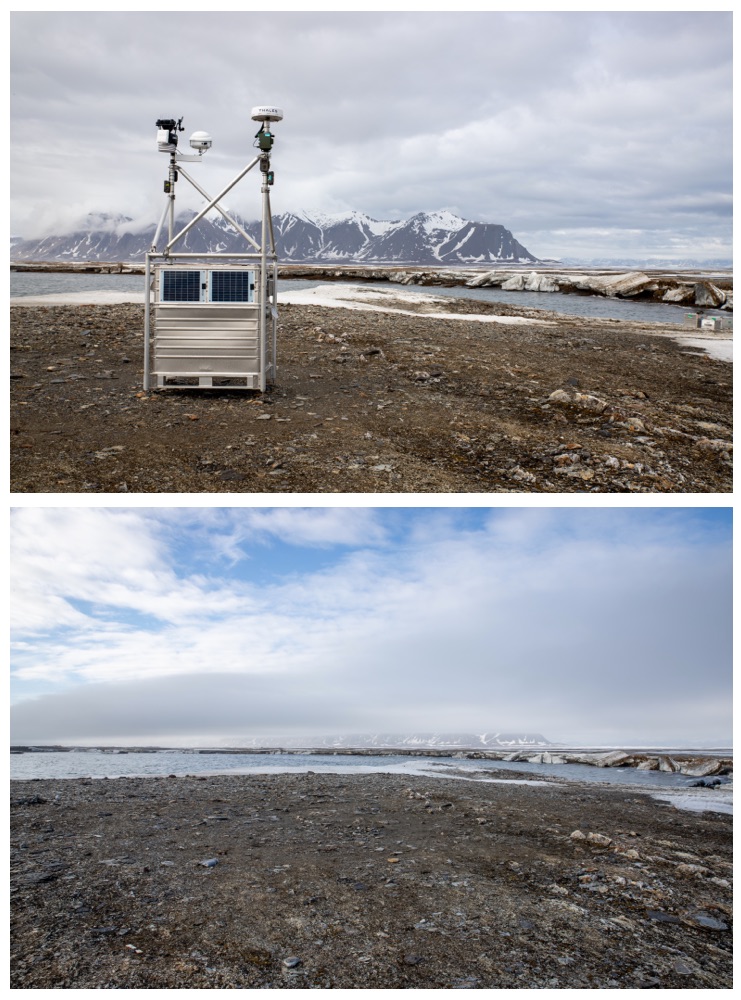
An important part of the Field Station | Naturae Observatio system is that it should be easy to manage in the field and only need technical oversight once a year. As well as the place where it has been standing, is left without visible traces. The bottom picture shows the location of the station after dismantling – returned to the rhythm of Nature! PHOTO: Matts Ekman | Bridge Builder Expeditions Spitsbergen, VOYAGE V, 2020.
Besides the photo documentation of the landscape in general and as a foundation for the Field artist, additional measurements were also planned to be carried out for the project COASTAL PROCESSES. However, this measuring was unfortunately not possible to achieve, due to extended wall formations of ice along the selected stretch of coast which made correct manual measurements impossible. The measurements were to be used for the now presented dissertation in Geology at Lund University: Coastal processes in the Arctic – with a case study on Prins Karls Forland, Svalbard. On the evening during the same day as the field group landed on the barren coast of Forlandsletta, all material was transported via Zodiacs out from the coast, through the narrow inlett between Forlandsøyane to the waiting expedition ship. The weather had then started to get worse with stronger winds and higher waves – as is common here – which is why transportation with the Zodiacs took longer than expected, but could finally be carried out so that both participants and all material could be loaded aboard MS Origo.
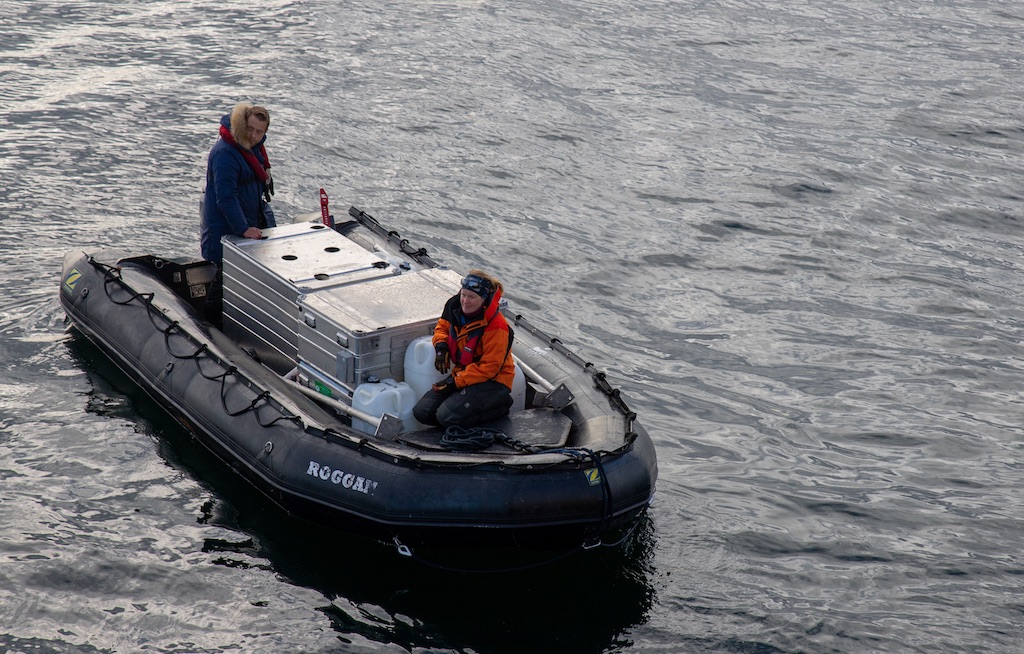
The Field Station head structure during transport – it is easy to manage in the field to save time protecting valuable technical equipment inside the aluminum boxes. PHOTO: Matts Ekman | Bridge Builder Expeditions Spitsbergen, VOYAGE V, 2020.
FOLLOW-UP AFTER THE FIELDWORK
THE BRIDGE BUILDER EXPEDITIONS SPITSBERGEN has since 2016 carried out extensive fieldwork along the west coast of Spitsbergen. Tens of thousands of man-hours have been spent by over 100 involved individuals from a large number of countries. Something like this has never been implemented so consistently and with such an interdisciplinary breadth of these latitudes. An innovative autonomous FIELD STATION | NATURAE OBSERVATIO | MARTIN'S EYE has been established, which over one whole year documented pure wilderness in the landscape Forlandsøyane and Forlandsletta. Overall, this has been a scientific enterprise that now together with the entire knowledge from these years will be followed up and developed further!
The work now continues – in summary, as follows:
- Initially, of course, local and necessary reporting to local authorities takes place.
- Transport by boat, including all field material (tons of structures, technology, apparatus, tools, etc.) back to the European mainland for further cleaning and storage for future field projects.
- To analyse all collected data, making it freely available under a Creative Commons license.
- To publish all pictures, making them freely available under a Creative Commons license.
- To develop the next version of an autonomous FIELD STATION | NATURAE OBSERVATIO system based on the knowledge gained from MARTIN'S EYE.
- New Arctic projects are already starting up to continue in the spirit now established by our work. Here we participate with new networks for several collaborations.
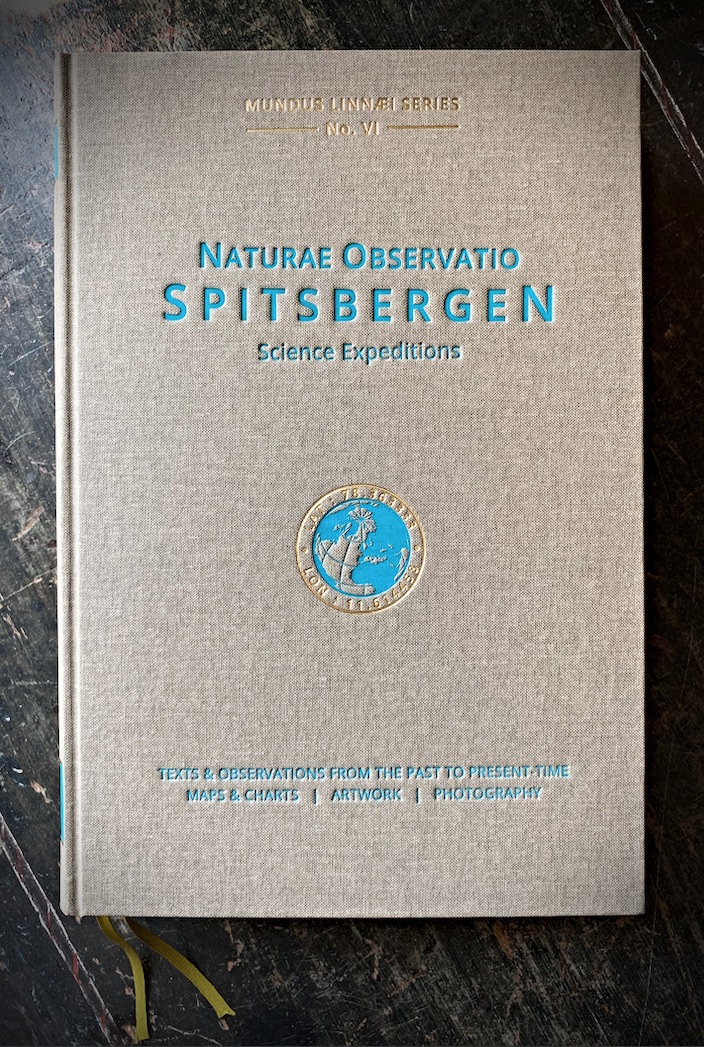
The planned book NATURAE OBSERVATIO SPITSBERGEN – Science Expeditions cover. PHOTO: The IK Foundation.
The IK Foundation will mainly concentrate its resources within the project to gather the knowledge that has arisen and present it in an upcoming interdisciplinary monograph in the prestigious series Mundus Linnæi – an extensive work in folio format, foldouts, newly written texts – a monumental reference work entitled NATURAE OBSERVATIO SPITSBERGEN – Science Expeditions. The monograph is planned to be published in 2022/2023 along with multi media ventures and an exhibition – updates to this international publicise project will be presented in 2021, so watch this space to stay informed!
Lars Hansen
THE PARTICIPANTS
In The IK Foundation, we follow the pandemic developments closely to protect our staff and linked networks. Participants' names, which are marked in yellow, indicate that they participate in the expedition work remotely via satellite communication. Read more about IK's view of this pandemic in iMessenger | Nature has many faces...
EXPEDITION PARTICIPANTS
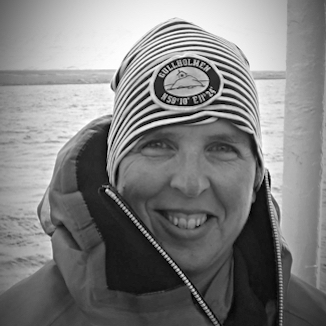
Helena Alexandersson
- (b.) 1973
- DUTY: Participant at a distance, researcher, student supervisor.
- AIM: Understanding past and current changes in the Arctic natural environment, encourage student learning in geology studies, promote geology in outreach activities.
- POST: Professor in Quaternary geology at Lund university, Sweden & UiT the Arctic University of Tromsø, Norway.
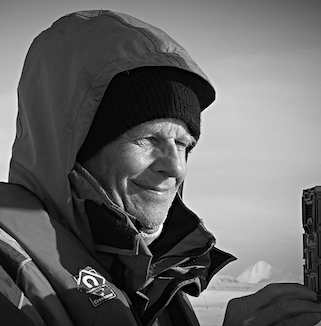
Arne Ardeberg
- (b.) 1940
- DUTY: Participant, researcher.
- AIM: Monitoring of Aurora Developments. Studies of Noctilucent Clouds. Recording of Meteors. Coordination of Science Projects and Technical Installations.
- POST: Professor emeritus in Astrophysics, Lund University, Sweden. Member of Royal Swedish Academy of Sciences, Royal Physiographic Society, Royal Society of Sciences, Chair of Crafoord Prize Committee in Astronomy and LMK-stiftelsen, Foundation for Interdisciplinary Scientific Research.
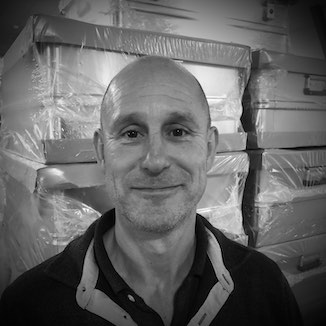
Lars Buxbom
- (b.) 1966
- DUTY: Participant, Field Assistant/Technician | Polar bear safety.
- AIM: My Aim is to assist with documentation and maintenance of the Field Station and at the same time to help with safety. I hope that my skills in trouble-shooting can be useful during the field survey. It will be a great opportunity to participate on a voyage in the waters of Svalbard.
- POST: Electrical engineer, Roskilde, Denmark.
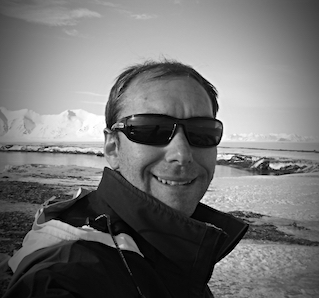
Tom Chicken
- (b.) 1983
- DUTY: Participant. Install and Commission fuel cell power system.
- AIM: To establish a reliable power supply for the Field Station.
- POST: Field Assistant/Technician (CTO), Hungerford, England.
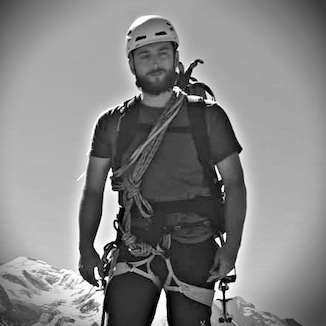
Will Clemens
- (b.) 1984
- DUTY: Participant, field assistant, Composer
- AIM: Convey the importance of conservation of the wilderness through the medium of music by composing a piece of music to commemorate the expedition.
- POST: Composer, London, England.
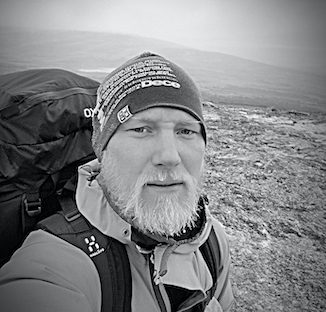
Matts Ekman
- (b.) 1984
- DUTY: Participant, assist the crew and shore team with transports, the zodiacs and to help out wherever needed.
- AIM: To participate in a unique fieldwork and true wilderness experience during a global pandemic – with the hope of understanding something more about Planet Earth.
- POST: Licensed mountain guide, mountain rescue team Åre in Sweden, Longyearbyen, Svalbard.
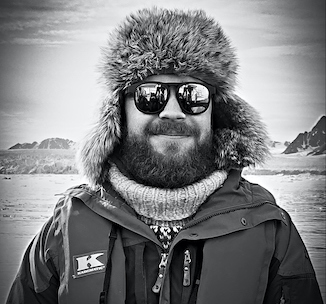
Pavel Glukhenkiy
- (b.) 1987
- DUTY: Boat driver and technician.
- AIM: To participate in a unique fieldwork and true wilderness experience during a global pandemic – with the hope of understanding something more about Planet Earth.
- POST: Operation manager at PolePosition, Longyearbyen, Svalbard. Originally from the Russian Federation.
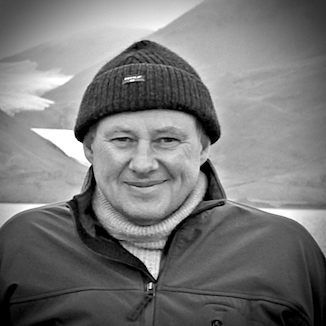
Lars Hansen
- (b.) 1960
- DUTY: Expedition leader, researcher.
- AIM: To strengthen our insight of the fieldwork that the so-called Linnaeus Apostles started almost three centuries ago. To understand Natural and Cultural History of Planet Earth – and hopefully building "new bridges of proficiency" between the past, present and future!
- POST: Head at The IK Foundation, FRGS, London, England.
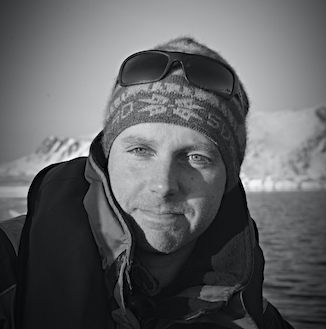
Emil Heijel
- (b.) 1985
- DUTY: Responsible for the safety during the expedition.
- AIM: Make sure we reach the goal during the expedition. Together with the field team execute the fieldwork in good explorer spirit. Responsible for the well being of the crew, participants and safety of the ship MS Origo.
- POST: Captain of MS Origo, Marstrand, Sweden.
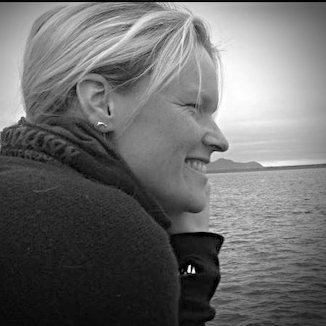
Thea Hellman
- (b.) 1981
- DUTY: Polar bear guard.
- AIM: To participate in a unique fieldwork and true wilderness experience during a global pandemic – with the hope of understanding something more about Planet Earth.
- POST: Former guide and shipbroker from Finland. Accountant at PolePosition, Longyearbyen, Svalbard.
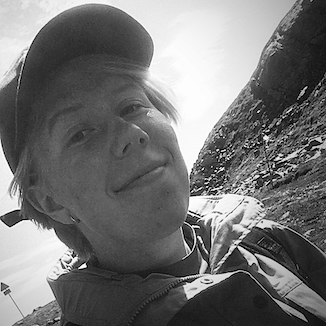
Elin Jirdén
- (b.) 1998
- DUTY: Participant at a distance, geology student.
- AIM: To better understand and examine the coastal processes at work in the Arctic and on Prins Karls Forland.
- POST: Geology student at Lund university, Sweden.
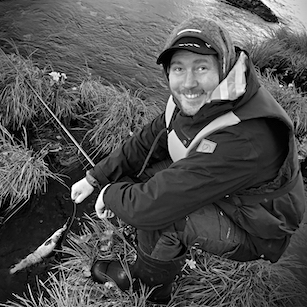
Mikael Johansson
- (b.) 1987
- DUTY: Deputy expedition leader.
- AIM: Ensure the safety of the participants working on the field station. Will also be interesting to work with a team consisting of people from different schools of life in a unique environment.
- POST: Ship Agency Manager at Pole Position Logistics in Longyearbyen, Svalbard.
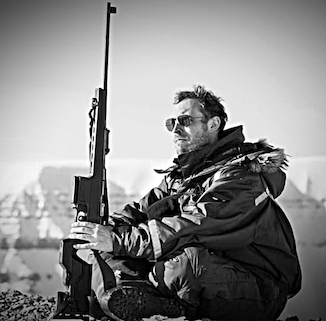
Stephen Linden
- (b.) 1971
- DUTY: Participant, assist the crew and shore team wherever it is needed.
- AIM: To participate in a unique fieldwork and true wilderness experience during a global pandemic – with the hope of understanding something more about Planet Earth.
- POST: Licensed Swedish Svalbard guide, owner of snowmobile rental and guiding company in Longyearbyen, Svalbard.
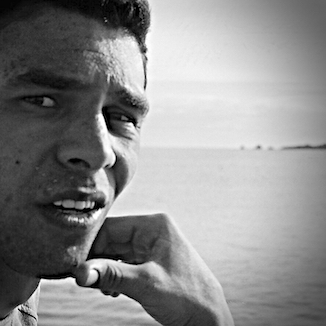
Henry Mills
- (b.) 1991
- DUTY: Participant. Assisting with the fuel cell power supply design and installation.
- AIM: To provide reliable power to the Field Station equipment. The application requires that the power supply endures the harsh climates and provides the autonomy required over hundreds of days without maintenance.
- POST: Field Assistant/Technician.
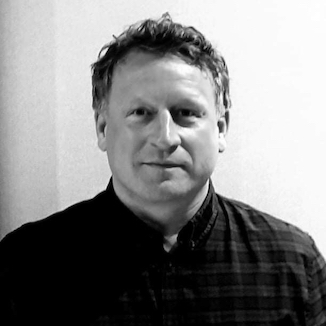
Erlend Nilsen
- (b.) 1972
- DUTY: Participant, field assistant
- AIM: Optimise the satcom connectivity. Participation gives this unique opportunity to experience and observe arctic nature and wildlife up close.
- POST: Director of sales, IEC-telecom, Oslo, Norway.
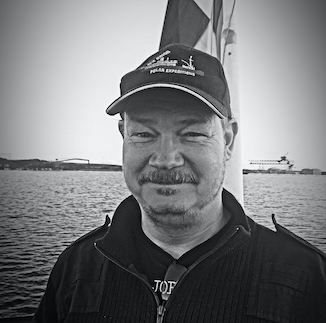
Daniel Persson
- (b.) 1973
- DUTY: Responsible for the engine department.
- AIM: Ensure the systems are working properly onboard MS Origo. I will do my best to assist the shore team in welding and other mechanical work they might need.
- POST: Chief Engineer onboard MS Origo, Nyköping, Sweden.

Adam Proctor
- (b.) 1972
- DUTY: Participant at a distance, moving image artist.
- AIM: Employing a variety of moving image techniques to document the project and create engaging content for a variety of platforms.
- POST: Motion designer and video producer, Fife, Scotland.
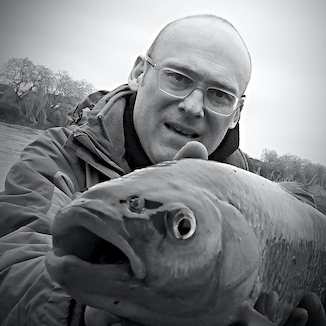
Graham Scott
- (b.) 1964
- DUTY: Participant at a distance. Graphic Design / UI Design.
- AIM: Present the research information from the project both in print and online.
- POST: Graphic Designer in Hull, England.
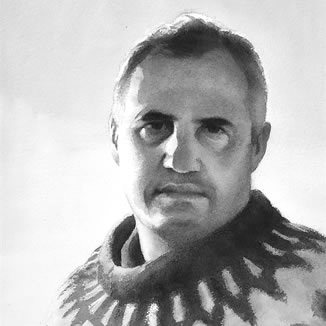
Måns Bergendal
- (b.) 1964
- DUTY: Participant, field artist.
- AIM: I want to convey what I see with immediacy and simplicity to make the viewer feel present on the Arctic scene. Watercolor is the most portable medium and an excellent one for this purpose.
- POST: Watercolour artist, illustrator and instructor, Röstånga, Sweden.
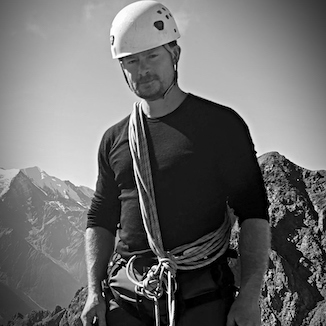
Jeff Snoxell
- (b.) 1971
- DUTY: Participant, technical expert, webmaster.
- AIM: Ensure the Field Station components are correctly configured, connected and fully operational. Very interested in gaining more knowledge about one of our last wild places on planet Earth.
- POST: Hardware and software specialist, Robin Hoods Bay, England.
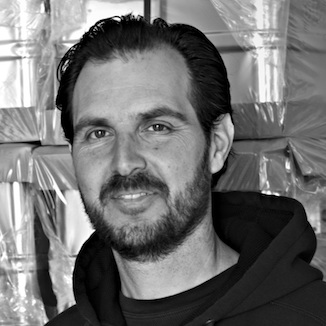
Søren Wiberg
- (b.) 1972
- DUTY: Participant. Field assistant/Technician
- AIM: My essential contribution to the expedition is to design and build the field station, but also serve for safety and assistance to the other members. By taking part in the expedition to Svalbard, my hope is to get a better understanding for the human impact on these remote areas, and to be a part of the history of the Linnaeus Apostles’ fieldwork.
- POST: Forestry and Landscape engineer, founder and owner of the family company AluBox, Denmark.
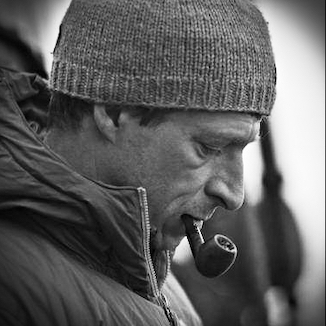
Rafael Swietoniowski
- (b.) 1973
- DUTY: Boat driver and technician.
- AIM: To participate in a unique fieldwork and true wilderness experience during a global pandemic – with the hope of understanding something more about Planet Earth.
- POST: Polish Ranger etc at PolePosition, Longyearbyen, Svalbard.
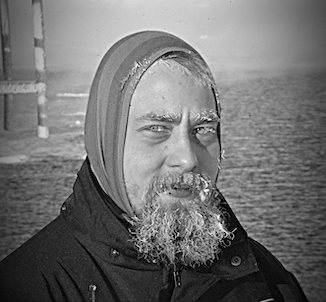
Mattias Wallén
- (b.) 1995
- DUTY: Bosun.
- AIM: With my experience of zodiac landings, my aim is to contribute with safe transports between ship and shore.
- POST: Bosun onboard MS Origo, in charge of zodiac operations, Tollered, Sweden.
EXPEDITION BACK BASE
- Controller: Jennie Asher
- Maritime lawyer: Bo Benell
- Research: Viveka Hansen
- The Reception Desk: Leo Ryder
EXPEDITION PATRONS
- LMK-stiftelsen, Foundation for Interdisciplinary Scientific Research
- The IK Foundation
iPROJECTS
iPROJECTS
In The IK Foundation and The IK Workshop Society there are continually ongoing comprehensive projects, each having different character and format. In iPROJECTS the current works and ideas are presented - Expeditions, Fieldwork, Research, Presentation in progress, and much more... For regular updates, and to make full use of iLINNAEUS' possibilities, we recommend fellowship by subscribing to our monthly newsletter iMESSENGER.
NAME OF PROJECT
- (Main title) The Linnaeus Apostles BRIDGE BUILDER EXPEDITIONS To Understand Planet Earth
- (Subtitle) BRIDGE BUILDER EXPEDITIONS - Spitsbergen (Svalbard)
- FIELD STATION | NATURAE OBSERVATIO | MARTIN’S EYE
GEOGRAPHICAL SCOPE
- Spitsbergen, Svalbard; in the agreement of the international Spitsbergen treaty (Svalbard treaty)
SUBJECTS
- Geography
- 18th century Studies'
- Cultural History
- History of Science
- Natural History
- Economic History
- Field Notes, Arts and Photography
- Field station, long-term observations
- Ecology
INSTITUTIONAL RESOURCES
- The IK Foundation, London, United Kingdom
- Natural History Museum University of Stockholm, Sweden
- Grenna Museum Polarcenter, Sweden
- University of Gothenburg, Sweden
- The Norwegian Meteorological Institute, Norway
- Lund university, Sweden
- The Royal Geographical Society (with IBG), United Kingdom
- The Swedish Academy, Sweden
- Stockholm university, Sweden
- University of Tromsø, Norway
- INTERACT | International Network for Terrestrial Research and Monitoring in the Arctic, EU
- GBIF | Global Biodiversity Information Facility, Norway & United Kingdom
- Natural History Museum University of Oslo, Norway
- Department of Biology, Lund University, Sweden
- Lund Observatory, Department of Astronomy and Theoretical Physics, Lund University, Sweden
- UNIS Aurora Observatory: The Kjell Henriksen Observatory (KHO), Svalbard.
PATRONAGE
This site/project
has been made globally available in collaboration with:
 Feel welcome to read more about how to take part...
Feel welcome to read more about how to take part...
 Feel welcome to read more about how to take part...
Feel welcome to read more about how to take part...
TIMELINE
- 2016: Expedition Voyage I: Field work, research, documentation and follow-up work.
- 2017: Expedition Voyage II: Field work, research, documentation and follow-up work.
- 2018: Expedition Voyage III: Field work, research, documentation and follow-up work.
- 2019: Expedition Voyage IV:A (May) and Voyage IV:B (September/October): Field work, research, documentation and follow-up work.
- 2020: Expedition Voyage V: Dismantling of the Field Station, documentation and follow-up / planning of publicise work.
- 2021: Research, follow-up work, Publicise work of Publication | Exhibition | Multimedia, with the title NATURAE OBSERVATIO SPITSBERGEN | SCIENCE EXPEDITIONS | TEXTS & OBSERVATIONS FROM THE PAST TO PRESENT TIME.
- 2023/24: International launch of the publicise work of Publication | Exhibition | Multimedia, with the title NATURAE OBSERVATIO SPITSBERGEN | SCIENCE EXPEDITIONS | TEXTS & OBSERVATIONS FROM THE PAST TO PRESENT TIME.
PUBLICISE
- iLINNAEUS.org
- Publicise work of Publication | Exhibition | Multimedia, with the title NATURAE OBSERVATIO SPITSBERGEN | SCIENCE EXPEDITIONS | TEXTS & OBSERVATIONS FROM THE PAST TO PRESENT TIME.
- Field Station | Naturae Observatio
- Expedition Picture Portfolio
- Expedition Video Portfolio
- Expedition Panoramic Portfolio
LINKS | FURTHER READING
- Research in Svalbard (RIS)
- RIS-ID 10275 (Bridge Builder Expeditions Spitsbergen)
- RIS-ID 11055 (Field Station Research Projects)
- The Norwegian Polar Institute's topographical Svalbard map portal
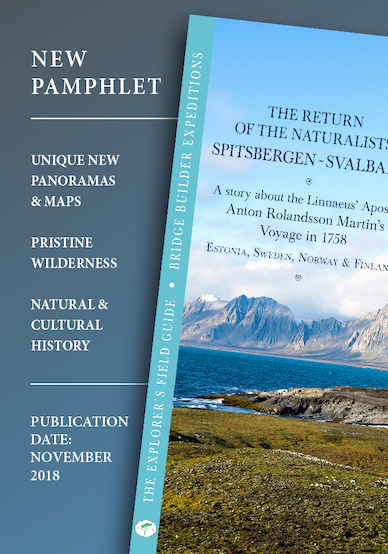
Updated/Checked 27/09/2023
THE IK FOUNDATION & COMPANY PROMOTING NATURAL & CULTURAL HISTORY
SUBSCRIBE TO OUR NEWSLETTER
TRANSLATE PAGE
A link to this page has
been copied to your clipboard
SHARE @been copied to your clipboard




© The IK Foundation & Company 2026
– a truly European organisation since 1988
– a truly European organisation since 1988
Legal issues | Forget me | and much more...
How to cite & Creative Commons
You are welcome to use the information and knowledge from
The IK Workshop Society, as long as you follow a few simple rules.
LEARN MORE & I AGREE
You are welcome to use the information and knowledge from
The IK Workshop Society, as long as you follow a few simple rules.
LEARN MORE & I AGREE


